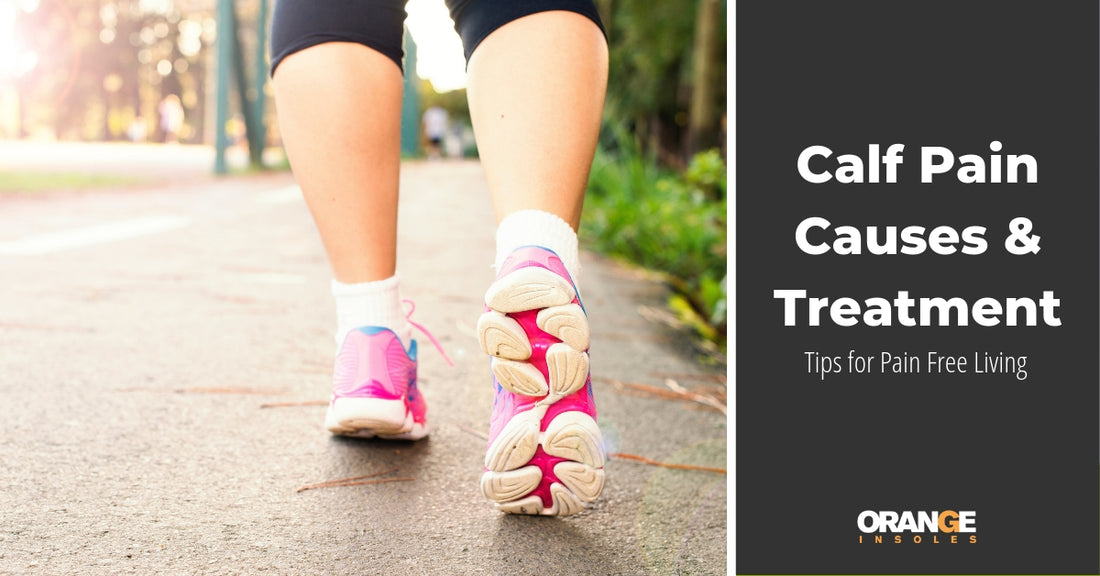We all know the feeling. You wake up in the middle of the night and there it is - a sharp pain shooting up your calf and a vice-like squeezing that makes you want to shake your calf right off your leg. Calf pain isn't fun, in bed or out walking or working out.
Whether a cramp or a torn muscle, calf pain is usually harmless. Here are some reasons your calf might hurt and ways to prevent the pain.
Note: Always consult your physician before beginning any exercise program. This general information is not intended to diagnose any medical condition or to replace your healthcare professional. If you experience persistent pain, consult your healthcare provider.
Muscle Cramp
The most common cause of that shooting pain is most often simply a muscle cramp. Muscle cramps occur when your muscles are tired or dehydrated, possibly after a long workout or walk. If you're prone to these cramps, make sure you're drinking more water and stretching properly before you exercise.
When you experience a cramp, it helps to stretch or massage the area that has cramped up.
Muscle Strain
Don't confuse a muscle cramp with a muscle strain. A medial gastrocnemius strain usually occurs during sports or exercise when pushing off during a sprint or jump. A strain can cause sudden, sharp pain or a tearing sensation and is often followed by swelling or bruising.

Gastrocnemius Muscle. Source: healthline.com
For a muscle strain, try applying ice four times daily, for 15-20 minutes until the swelling goes down.
Another common area for a strain is the soleus muscle, located below the gastrocnemius muscle in the calf. This is a common, chronic injury for long-distance runner and can present as a deep soreness in the calf that occurs when bending the knee and pulling your toes back toward the shin at the same time. To prevent it, make sure you run with good form.
Muscle Rupture
The plantaris muscle is a thin muscle and runs along the gastrocnemius muscle. It's a small muscle and can tear as a result of lunging forward causing a sharp, snapping in the back of the leg. Swelling and bruising on the back of the leg may occur and this rupture could also bring on cramping of the calf muscle.
Tendinitis
While tendinitis is not related to a calf muscle strain, the first sign of an inflamed Achilles tendon is a pain in your lower calf, near your heel. It's a common injury that occurs when the tendon is swollen, stretched, or torn.
For relief from tendinitis, try ice or take anti-inflammatories if you know it's safe to take them. You should avoid any activity that causes pain and when the pain begins to subside, try some stretching.
Nerve Entrapment
If you experience any numbness, tingling or sharp pain in your calf it could be a sign of an enlarged or swollen calf putting pressure on your nerves. It's most common for this pain to be caused by the sural and peroneal nerve.
Additional Treatments
Stretching
Stretching is a great form of holistic treatment and injury prevention. You should make sure to have a proper stretching routine both before and after working out. You can also stretch when you feel minor pain to help ease the discomfort but be careful about pushing the injury too far and ask your doctor if you have concerns.
Hot and Cold
Ice and heat application is one of the most common treatments for calf pain. One could be better than the other depending on the pain and your situation. For calf strains, it's best to use ice until the swelling subsides.
Over the Counter Meds
Painkillers, Nonsteroidal anti-inflammatory medications, commonly referred to as NSAIDs, can be used for pain relief as long as you know it's safe to take them. They are great for those with calf pain caused by tendonitis or a muscle strain, contusion, or cramps.
Always Check with Your Doctor
While many of these injuries are common and will go away on their own, it may be necessary to see your doctor if you have the inability to walk comfortably, you have calf pain while sleeping, the pain persists beyond a few days, there is unusual swelling, or you experience any other unusual symptoms.
Prevention is the Best Medicine
Of course, prevention is the best medicine. Why hurt if you don’t have to?
Read more: Why You Should Measure Your Feet Size Before Buying Shoes
In order to prevent injury, make sure you’ve got a good holistic health routine, wear the right shoes (with good fit) walk (or run) with good form and keep your body aligned and supported. If you need extra support for any of these activities, give our insoles a try. Insoles also play a role in injury prevention! Your body may just thank you for it!
SHOP FOR INSOLES

























































